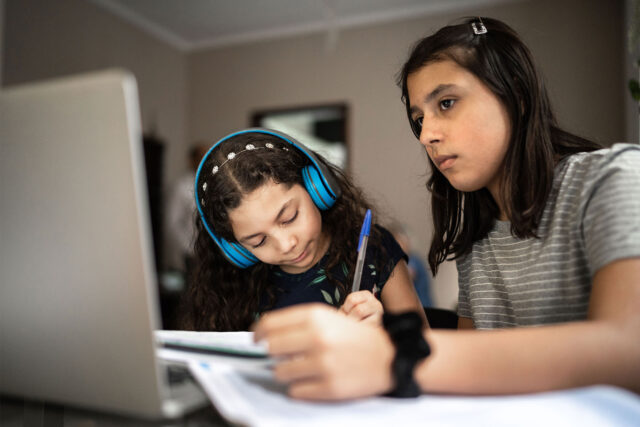Over a year ago, California schools closed down at the onset of the COVID pandemic and shifted to distance learning. Districts across the state purchased devices and Wi-Fi hotspots for students in need. As lawmakers and educators debate the role of remote instruction moving forward, how successful has California been in ensuring that students have reliable access to digital devices and the internet?
The good news is that more students now have access to computer devices compared to a year ago. When schools first closed last spring, 67% of students always had access to computer devices at home. This increased to 82% in fall 2020 and stayed steady (80%) in spring 2021. The improvement is most remarkable among Black, Latino, and low-income students. For instance, only 52% of low-income students had reliable access to devices in spring 2020, but 71% did in spring 2021—a nearly 40% gain. Investments at the federal, state, and local levels, including the two rounds of stimulus relief, likely contributed to this significant progress. Our survey of school districts showed that 76% of districts improved internet and device access in fall 2020.

However, there has been no improvement in internet access in the past year. Today, 71% of students always have internet available for educational purposes, the same as last spring. The lack of improvement has left digital equity gaps mostly unchanged: nearly 40% of low-income students still lack reliable internet access; so do a third of Black and Latino students. Moreover, today fewer Asian American students report having internet always available (77% in spring 2021 vs. 84% in spring 2020).

The lack of progress could be attributed to several factors. First, although many internet service providers offered free or subsidized internet, these programs are temporary and may have expired over the course of the pandemic. Second, households with school-age children have an average of four people, and multiple users need additional bandwidth for reliable access. Third, internet remains limited in rural and remote areas as well as in some densely populated urban areas. Finally, the Emergency Broadband Benefit, which was included in the December stimulus to provide much needed support for low-income households, has just started this week.
Inequitable access to devices and internet raises concerns about disparities in students’ learning opportunities. More schools are bringing students back for in-person instruction, but many families, particularly those in communities hard hit by COVID, may opt to stay in distance learning. In addition, two in ten districts nationwide plan to keep some version of distance learning even after the pandemic ends. Existing federal and state investments provide temporary relief, yet much more is needed to close the digital divide.
A number of policy solutions have been proposed to eliminate the remaining digital equity gaps in education. The state received $26 billion from the federal relief money to invest in infrastructure projects including broadband. The FCC’s $3.2 billion Emergency Broadband Benefit and the newly approved $7.2 billion Connectivity Fund Program provide subsidies to low-income families, and funding to schools and libraries. There are also a number of presidential, congressional, and legislative bills being considered. Meanwhile, districts like Fresno Unified are in the process of building their own networks. Coordinating federal, state, and local efforts will be critical to close the digital divide in the long term.






